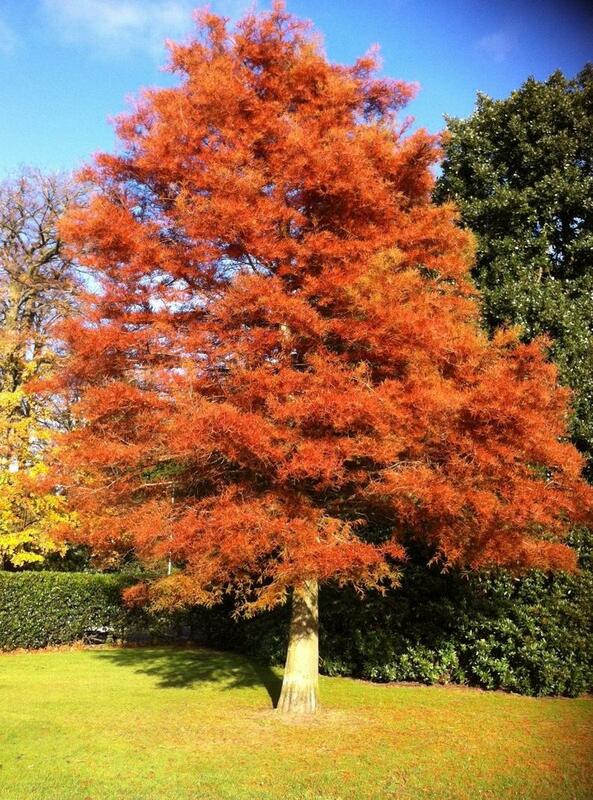30th Aug 2023
Fall Foliage Trees
Fall is indeed a great time to plant trees in many regions. There are several reasons why fall is considered an optimal planting season for trees:
- Soil Temperature: In the fall, the soil is still warm from the summer months, which encourages root growth; this allows the newly planted tree to establish its root system before winter.
- Moisture Availability: Fall usually brings more consistent rainfall, providing the tree with ample moisture to support root development without the extreme heat of summer, which can lead to water stress.
- Reduced Transpiration: During fall, trees lose fewer leaves and have reduced transpiration rates compared to the hot summer; this reduces stress on the newly planted tree and aids in its establishment.
- Less Stress: Planting in fall reduces the stress on trees compared to planting during the scorching summer heat or the cold of winter.
- Fewer Pests and Diseases: Many pests and diseases are less active in the fall, which reduces the risk of infestation or infection for newly planted trees.
However, it's essential to remember that the best time to plant trees can vary depending on the specific climate and location. In some regions with harsh winters, it may be better to plant trees in spring to give them more time to establish before the cold sets in. Additionally, some species have their specific planting preferences, so it's always a good idea to research the ideal planting time for the particular tree species you want to plant.

Red maple (Acer rubrum) is a popular and beautiful tree species native to eastern and central North America. It is highly valued for its vibrant red foliage in the fall, making it a sought-after choice for landscaping and ornamental purposes. Here are some key features and considerations for planting red maples:
- Climate and Hardiness: Red maples thrive in USDA hardiness zones 3 to 9, which cover a wide range of temperatures. They are adaptable and can tolerate various soil types but prefer moist, well-drained soils.
- Sunlight: Red maples generally prefer full sun to partial shade. While they can tolerate shade, they will exhibit their most vibrant fall colors when exposed to more sunlight.
- Size and Spacing: Red maples can grow to be large trees, reaching 40 to 60 feet or more. Consider the tree's mature size when selecting the planting location, leaving enough space to grow without overcrowding.
- Fall Color: As mentioned earlier, one of the main attractions of red maples is their brilliant red, orange, or yellow fall foliage. The intensity of the color can vary based on climate, soil conditions, and tree health.
- Watering: Red maples are relatively tolerant of wet conditions, but they still require adequate water during their establishment phase after planting. Ensure they receive sufficient moisture to help their root systems develop.
- Pruning: Red maples generally don't require much pruning, but it's a good idea to remove any dead, damaged, or diseased branches for the tree's overall health.
- Drought and Heat Tolerance: While red maples are adaptable, they can struggle during prolonged periods of drought or extreme heat. Adequate watering during dry spells can help maintain their health.
- Landscape Use: Red maples are often used in urban and suburban landscapes as shade or ornamental trees for their aesthetic value. They also serve as habitat and food sources for various wildlife.
- Fall Planting: As discussed earlier, fall can be an excellent time to plant red maples. The timing allows the tree to take advantage of the cooler temperatures and ample moisture to establish its root system before winter.
- Native Range: The Tulip Poplar is native to the eastern United States and is commonly found in various states.
- Size and Shape: Tulip Poplars are large, deciduous trees that can grow up to 70 to 90 feet tall or even taller under optimal conditions. They have a distinctive straight trunk and a broadly conical shape.
- Leaves and Flowers: The leaves of Tulip Poplars are unique and have a tulip-like shape, with four lobes and a flat tip. In the spring, the tree produces beautiful, showy flowers with yellow-green petals, often high up in the canopy, making them somewhat challenging to see up close.
- Sunlight: Tulip Poplars prefers full sun to partial shade. They are fast-growing trees when young, making them popular for reforestation projects and landscaping.
- Soil and Water: They grow best in well-drained, moist soils with a slightly acidic to neutral pH. Adequate watering is essential, especially during dry spells and the tree's establishment period.
- Wildlife Habitat: The Tulip Poplar provides a valuable habitat for various wildlife, attracting birds and insects with its flowers and providing animal shelter.
- Landscape Use: Tulip Poplars are often used as ornamental trees in large landscapes, parks, and along streets due to their striking appearance and fast growth rate.
- Fall Color: In the fall, the Tulip Poplar's leaves turn a vibrant yellow, adding to its appeal as an ornamental tree.
- Space Consideration: Given their large size, Tulip Poplars need ample space to grow and should not be planted too close to buildings or other trees.
- Disease and Pest Tolerance: Tulip Poplars generally resist many pests and diseases, making them relatively low-maintenance trees.
When planting any tree, it's crucial to consider your local climate and soil conditions to ensure it's well-suited for the area. Additionally, it's a good practice to consult with local horticulturists or arborists for specific advice on planting and caring for Tulip Poplars in your region.

